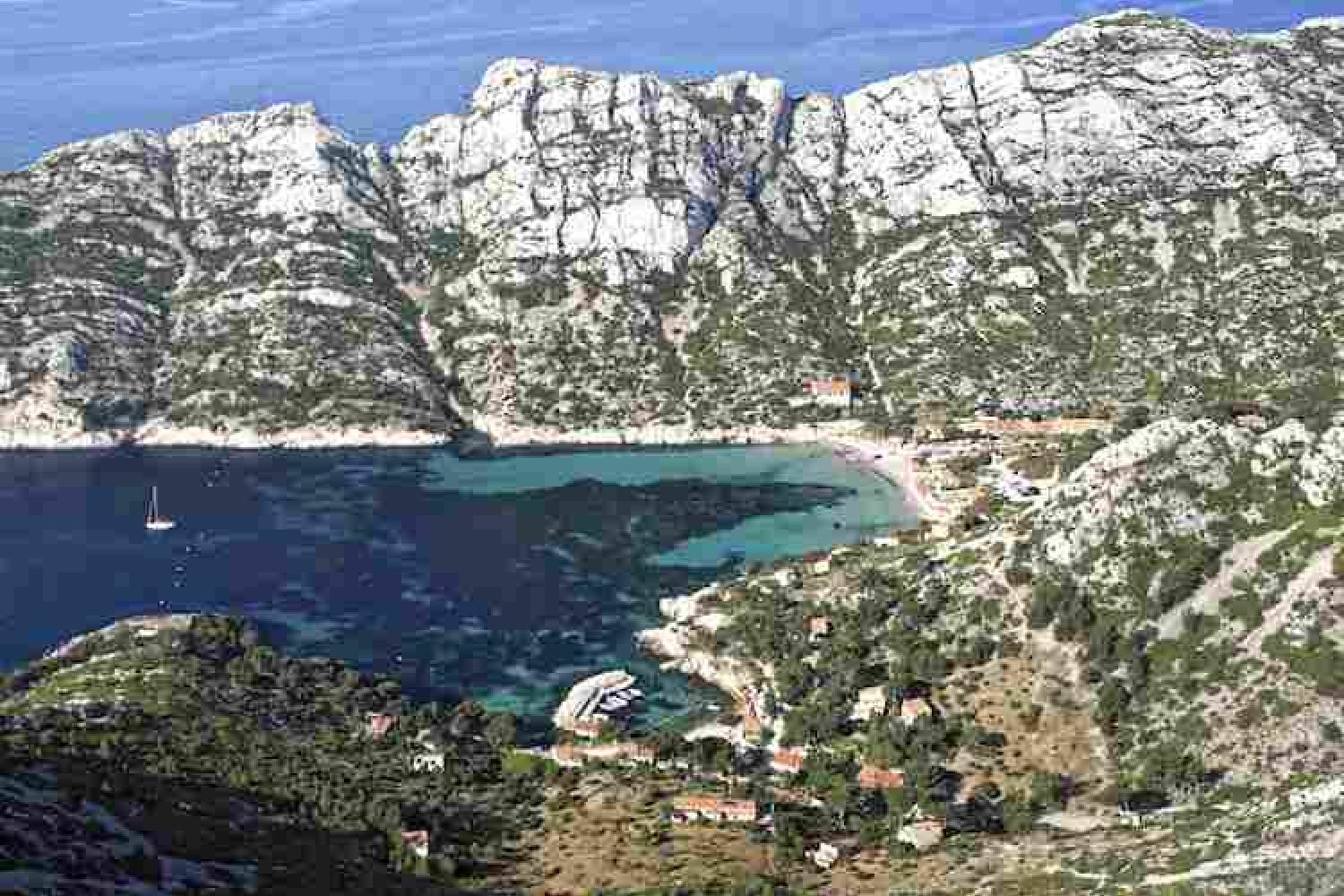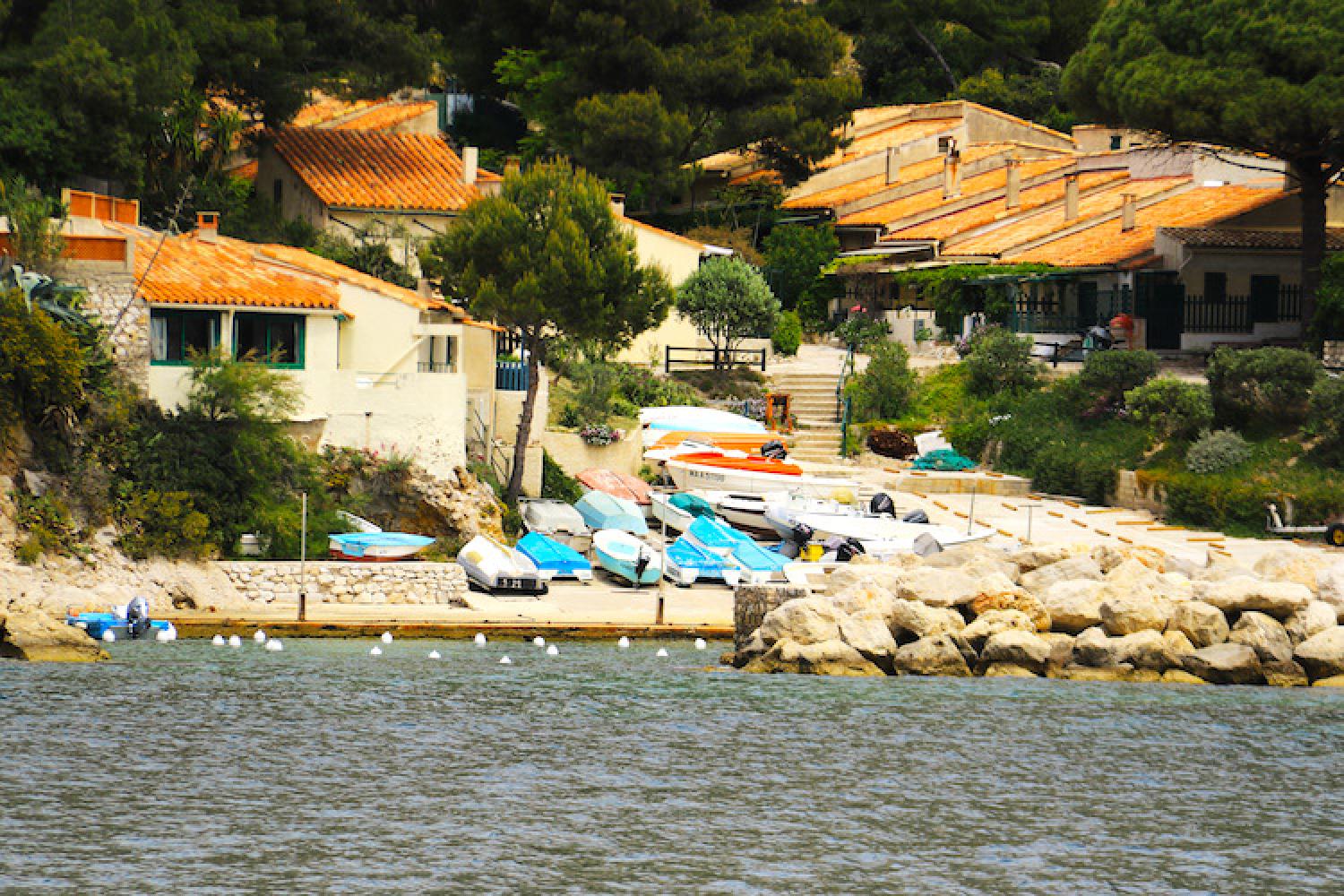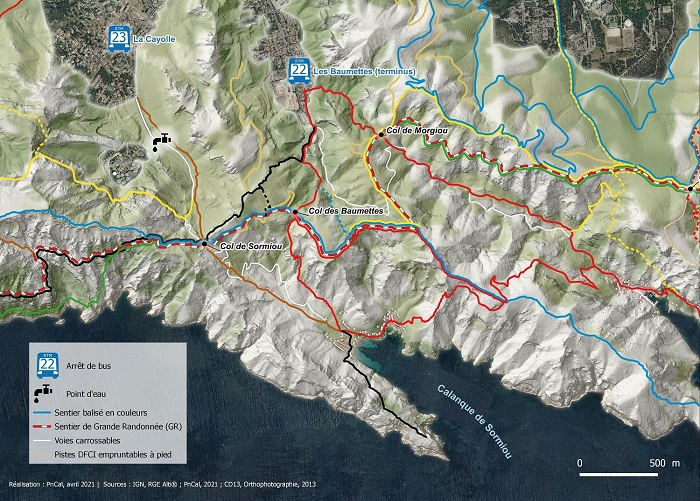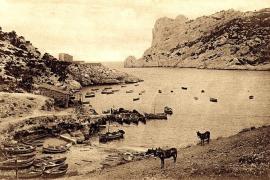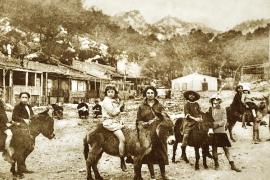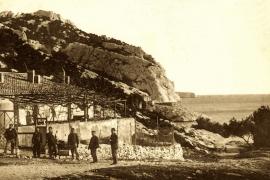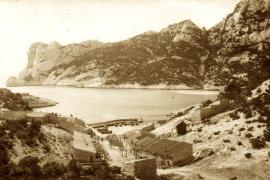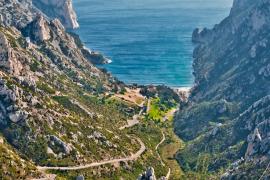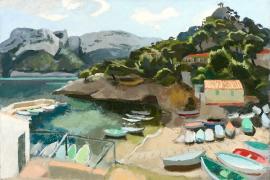A calanque suffering from overtourism
Getting here and regulations
Getting here
Bus RTM no.23 – direction Beauvallon, La Cayolle stop, or 22 – direction Les Baumettes, to the terminus, then an approximately 45-minute walk.
Hiking trail: Sormiou calanque via Col de Sormiou
Hiking trail: Sormiou calanque vial Col des Baumettes
Getting to the Calanques from Marseille
Localisation
GPS coordinates: 43.210689, 5.419993
Map of trails and routes to Sormiou calanque
Click to zoom
Before heading out into the Calanques National Park, prepare your visit and read about good conduct and regulations here.
Access to motorised vehicles to the Sormiou calanque hamlet is limited: see details about dates and times here.
The hamlet is open to visitors all year round. The surrounding hills are also open except when closed due to fire danger.
Note: the calanque is overcrowded in summer. The road is often congested with traffic jams at peak hours and on the weekends. The village is blocked by traffic. We recommend the bus and green transport to get here. Respect the site: do not leave waste behind, created noise pollution, or park outside authorised areas.
Swimming is possible in Sormiou beach (lifeguard in summer only and one first-aid station) but it is overcrowded in summer. For more information, read about beaches and swimming.
Historical occupation
This location has been occupied since prehistory, as demonstrated by the Cosquer Cave. During Classical Antiquity, the Ligurians settled here, soon followed by the Phocean Greeks, then the Romans.
Groundwater under the calanque supplied two wells that date back to the 14th century, only drying up in the 20th century. This meant that fishermen could settle here permanently and visitors could take a refreshing pause during their hike. In fact, the name Sormiou in Provençale dialect means the "best source".
The calanque may be wider than most but it is not deep enough for large craft: only typical barques could stop here. Around 1880, amongst the fifty-odd residents in the calanque, most were modest fishermen from Mazargues, now one of the 111 districts of Marseille.
Living in a cabanon
In Sormiou, fishing was more of a recreational pastime, unlike Morgiou where professional fishing was the main activity. Here, weekend fishermen come to tease fish in the morning, then play boules in the afternoon.
Originally simple makeshift shelters built by the men, from the beginning of the 20th century, women and children also settled in the cabanons. It was the beginning of a particular lifestyle close to nature and stripped of modern comforts. They still don't have running water or electricity! However, some things have changed over the century with the arrival of solar panels, gas, and phones.
Customs officials and smugglers
The longest cabanon, now divided into several homes, was home to customs officials. The Calanques was a smuggling hotspot, as recounted by journalist and writer Marius Chaumelin:
"When you see the steep cliffs along the coast, it's hard to imagine smuggling in the area; but you'd be surprised. The rocks hide deep excavations where smugglers store their illegal merchandise. As a result, the coast is actively observed, with customs brigades positioned at regular distances, or where landing is possible. The Sormiou station, deep in the bay and halfway up the hill, overlooks a wide section of the sea. That's where the brigade carefully watches over the land and sea, by day and by night."
The Countess of Sormiou
In 1876, the calanque was bought by Charles Buret and Augustine Pascalis in an auction. They gave it to their daughter Marie in her dowry. In 1885, she married Count Alfred de Ferry, descendant of an old aristocratic Provençale family, deputy prefect, writer, and member of the Académie de Marseille. She lived with him in Magalone in a bastide on Boulevard Michelet. They lived a cultural life in high society, hosting Frédéric Mistral and Anna de Noailles. But Marie's favourite pastime was going to Sormiou on horseback to picnic and write odes to the beauty of the Calanques.
Fans of the area, the count and his wife decided to build a summer house there in 1894. It was known as "the Château" by the local Calanques population because it was stupendously luxurious compared to the little homes. The couple also built 17 cabanons that they rented out at an affordable rate so that the original occupants could stay in the calanque before any newcomers arrived.
A family tradition
Tourists arrived with the good weather. Open-air dance halls were erected. It was the beginning of leisure time. The Restaurant du Château, the UCPA centre, and the small port, now reserved for pleasure craft, date back to this era.
Other heirs of this period, the current residents are mainly the descendants of Mazargues locals, settled there since the 19th century. After the death of Marie de Sormiou in1956, her great-grandchildren created a property company that now rents the cabanons to inhabitants.
Today, in agreement with the national park and the ONF which owns the surrounding hills and coastline, Calanques residents continue to preserve their typical cultural heritage in Provençale tradition, nestled in a prize location.
The birthplace of diving
The natural paradise continues under the water where pioneer divers ventured. It was in Sormiou, in 1942, that Georges Beuchat, Albert Falco, and Commandant Cousteau dived with tanks for the first time, introducing the fundamentals for modern underwater diving. They chose this location because the sea bed is particularly rich: for example, Sormiou shelters a beautiful example of Neptune grass, clearly visible in the turquoise water.
Art in Sormiou
This untouched landscape has been featured by many artists other than Marie de Sormiou. Writer Jean-Claude Izzo mentions it in his novels, painter Joseph Inguimberty painted several works here, and many films have been shot here such as Les Témoins by André Téchiné starring Emmanuelle Béart and La French starring Jean Dujardin.
" Once the sea has cast its spell, you are forever held in its marvellous net."
Did you know?
The road was only tarred in 50s and 60s, so donkey caravans were used to transport regular supplies into the calanque and export fresh fish. Legend has it that they knew the trip by heart and could make the return trip unaccompanied! You can still see small walls of the paved donkey track amongst the restanques on the terraced hills.




